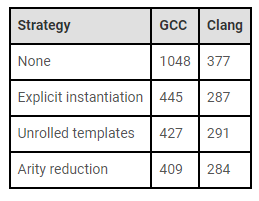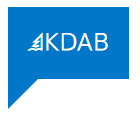Concurrency: From Theory to Practice -- Lucian Radu Teodorescu
 Concurrency is a complicated topic. Lucian Radu Teodorescu provides a simple theory of concurrency which is easy to reason about and apply.
Concurrency is a complicated topic. Lucian Radu Teodorescu provides a simple theory of concurrency which is easy to reason about and apply.
Concurrency: From Theory to Practice
by Lucian Radu Teodorescu
From the article:
One of the big challenges with concurrency is the misalignment between theory and practice. This includes the goals of concurrency (e.g., improving the performance of the application) and the means we use to achieve that goal (e.g., blocking primitives that slow down the program). The theory of concurrency is simple and elegant. In practice, concurrency is often messy and strays from the good practices of enabling local reasoning and using structured programming.
We present a concurrency model that starts from the theory of concurrency, enables local reasoning, and adheres to the ideas of structured programming. We show that the model can be put into practice and that it yields good results.
Most of the ideas presented here are implemented in a C++ library called concore2full [concore2full]. The library is still a work in progress. The original goal for this model and for this library was its inclusion in the Hylo programming language [Hylo]. For Hylo, we want a concurrency model that allows local reasoning and adheres to the structured programming paradigm. We also wanted a model in which there is no function colouring [Nystrom15], in which concurrency doesn’t require a different programming paradigm.
This article is based on a talk I gave at the ACCU 2024 conference [Teodorescu24]. The conference was great! The programme selection was great; there was always something of interest to me. With many passionate C++ engineers and speakers, the exchange of information between participants was excellent; as they say, the best track was the hallway track. I highly encourage all C++ enthusiasts (and not just C++) to participate in future ACCU conferences.

 How do you expose a C++ object to a TypeScript layer or other scripting language? Russell K. Standish demonstrates an approach using a RESTService API that is scripting-language independent.
How do you expose a C++ object to a TypeScript layer or other scripting language? Russell K. Standish demonstrates an approach using a RESTService API that is scripting-language independent. Last time, we saw how to provide formatting for a simple user-defined class. Spencer Collyer builds on this, showing how to write a formatter for more complicated types.
Last time, we saw how to provide formatting for a simple user-defined class. Spencer Collyer builds on this, showing how to write a formatter for more complicated types. The conclusion of the last post was that we need to change something in our models: maybe std::vector should use a different strategy when erasing elements; maybe types like std::tuple<int &> should not be allowed to be stored in a vector; maybe Qt should not be using memmove when erasing objects of trivially relocatable type (but it can still optimize the reallocation of a vector); maybe Qt’s definition of trivial relocability does not match ours, and we need to fix our definitions. In this post we will explore these possibilities and reach some conclusions.
The conclusion of the last post was that we need to change something in our models: maybe std::vector should use a different strategy when erasing elements; maybe types like std::tuple<int &> should not be allowed to be stored in a vector; maybe Qt should not be using memmove when erasing objects of trivially relocatable type (but it can still optimize the reallocation of a vector); maybe Qt’s definition of trivial relocability does not match ours, and we need to fix our definitions. In this post we will explore these possibilities and reach some conclusions. In the last post of this series we started exploring how to erase an element from the middle of a vector.
In the last post of this series we started exploring how to erase an element from the middle of a vector. In recent discussions around the use of std::move in C++, questions have arisen regarding its potential overuse and the compiler's treatment of its return values. Addressing concerns raised by developers like Jonathan Duncan, this article delves into the nuances of
In recent discussions around the use of std::move in C++, questions have arisen regarding its potential overuse and the compiler's treatment of its return values. Addressing concerns raised by developers like Jonathan Duncan, this article delves into the nuances of 